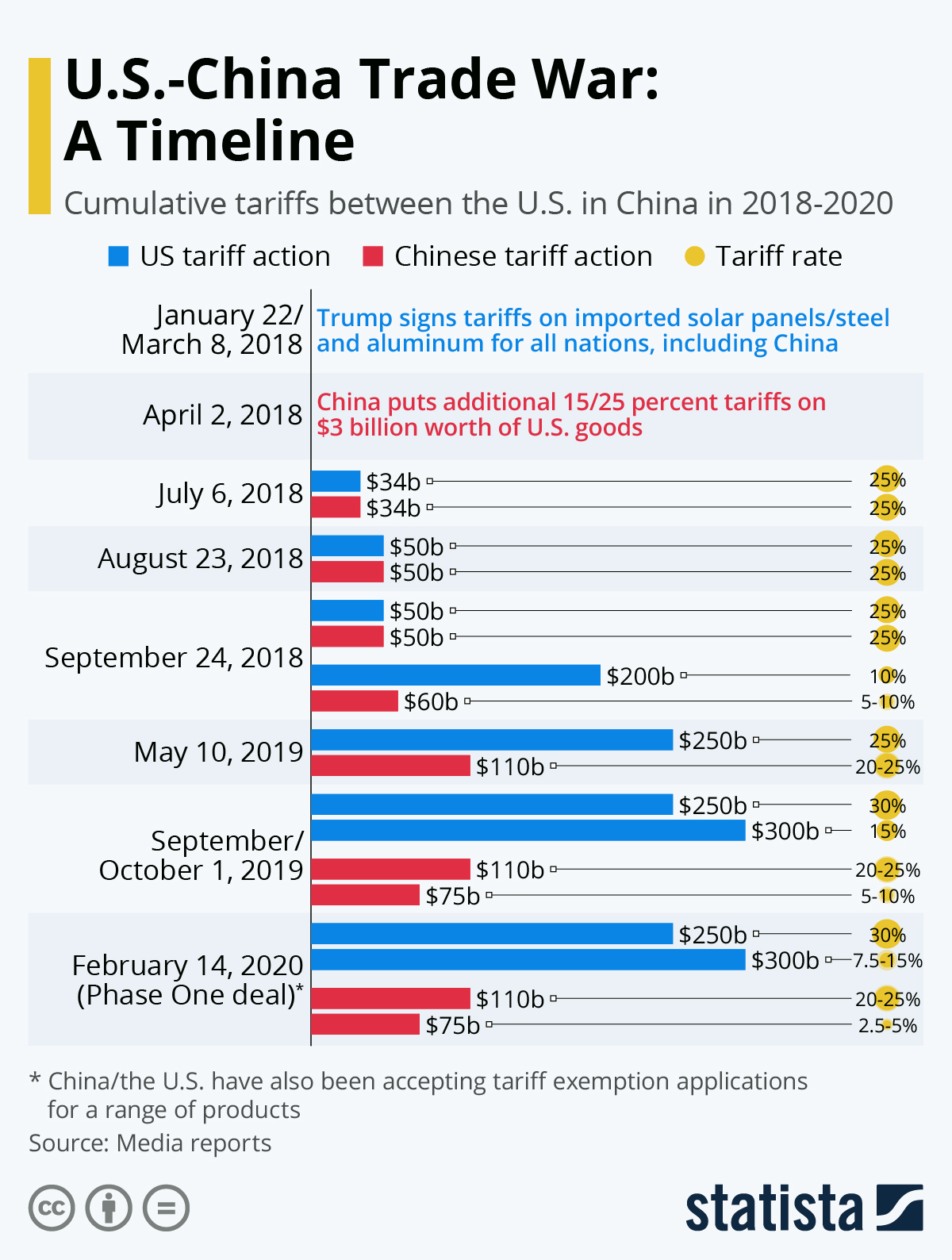The U.S. and China resumed trade talks last week and are expected to evaluate how the Phase One agreement enacted in February has played out. Since then, the coronavirus pandemic has ravaged the world, making it hard especially for China, to stick to its commitment to purchase a set amount of U.S. goods under the deal. Additionally, new conflicts over Chinese apps TikTok and WeChat have emerged, creating a less-than-favorable environment for the talks.
A look at the U.S.-Chinese trade war and the Phase One deal show that even under the initial agreement in early 2020, a large part of the bilateral tariffs are still in place, at least officially. China and the U.S. lowered tariffs some, but also have been granting exceptions to traders on a case-by-case basis.
At the height of the trade war in late 2019, the U.S. levied tariffs of 15 percent on $300 billion and 30 percent on another $250 billion of Chinese goods. China retaliated with a tax of 5 to 10 percent on American goods worth $75 billion and 20 to 25 percent on goods worth $110 billion.
The back-and-forth between the two nations began in early 2018 when President Trump announced tariffs on solar panels and later on steel and aluminum for all countries. China, a top player in the solar planel and steel industries, retaliated with tariffs on $3 billion worth of U.S. imports. Tariffs on fifty billion dollars worth of goods announced in June 2018 were periodically rolled out over the summer. After a first round of failed negotiations, a second round of tariffs hit in September 2018. The rate on those was again increased on both sides in May 2019, before a third round of tariffs became active in September.






















